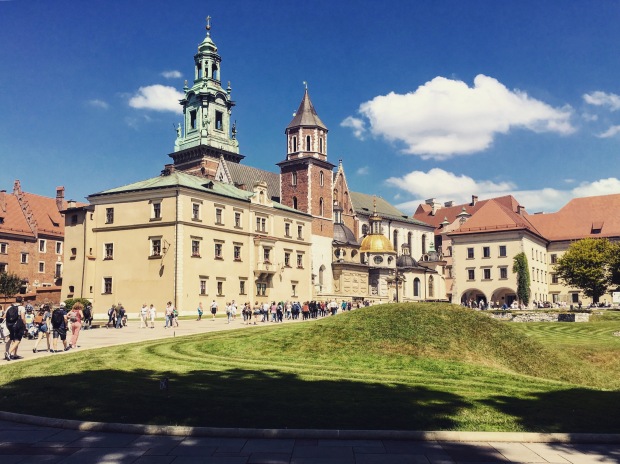It only took a failed bus journey, a few extra days in Berlin and about 9hrs on a train, but I eventually made it to Poland.
Warsaw was my first impression of the country. I knew that the city had been completely devastated during WWII and was unsure how the rebuilt capital would look. When walking out of the train station, I was greeted by a city that, as one would expect, was decidedly modern yet surprisingly metropolitan. At first glance, its skyline seemed a little confused, featuring a mixture of contemporary skyscrapers as well as communist era constructions. This contrast of new and old would become a running theme as I discovered more of the city.

The Palace of Science and Culture vs. the Old Town – which is older?
I made my way to the area of the city misleadingly referred to as the, Old Town. While on the surface, it mirrored many of the European historic towns; it was in fact considerably newer. The Warsaw Uprising of 1944 saw the remains of an already battered Old Town, almost entirely decimated. Following WWII, the Old Town was resurrected from the rubble but of course would never regain the authenticity of its pre-war design.
While Warsaw may be lacking in some of the material history we see across Europe, its modern landscape is possibly the most blatant reminder of its troubled past. Although the city’s architecture leaves a lot unsaid, its silence really says it all.

The old facade of a modern city.
As with many other cities in Poland, Krakow was occupied by the Nazis during WWII and faced the same tyrannical rule. However, unlike these other cities, Krakow was left mainly unscathed by the war. With the intentions of making the city a base for light industry and agriculture within the Third Reich, the Nazis left much of Krakow’s infrastructure undamaged. Due to this, much of the city’s Old Town remains in its incredibly picturesque original form, with a busy and bustling atmosphere. As you walk through it, each street beautifully presents a new photo op.
Although the city may have suffered less than its neighbours, it would be wrong to say it was untouched by the events of WWII. On the edge of the city, the remains of the Płaszów Concentration Camp, as well as the Oskar Schindler Factory, can be found. These places both act as a reminder of what can amount from the cruel and cowardly ideology of one man, and what could be achieved through the heroism of another.
Having visited both Warsaw and Krakow, it was interesting to see how two major cities of a war torn country could evolve in such different ways but still hold so many memories of the past.

The best of European history.
When I started this blog, I promised myself I wouldn’t just write for the sake of it, that I would only write when it meant something to me.
My visit to Auschwitz-Birkenau was the most sombre and thought provoking day of my trip, yet, I’ve found myself struggling to write anything about the experience at all. I’ve been searching for the words to describe the harrowing experience with the respect it deserves. However, the truth is that it’s difficult to put into writing what that day meant as I don’t think that there is any combination of words that can truly convey the emotions that walking through the gates of such a place will trigger.
 I think that’s one of the reasons that everyone should try to visit Auschwitz-Birkenau at least once in their life. You may watch documentaries about the holocaust or read accounts of what went on at such camps, but until you walk through the gates of such a place, you’re missing the context needed to truly comprehend what once happened there. The buildings of the camp, frozen in time, watch from above as you walk through the quiet streets between them, focused on the unthinkable fact that so many innocent people once suffered and died there by the hands of man.
I think that’s one of the reasons that everyone should try to visit Auschwitz-Birkenau at least once in their life. You may watch documentaries about the holocaust or read accounts of what went on at such camps, but until you walk through the gates of such a place, you’re missing the context needed to truly comprehend what once happened there. The buildings of the camp, frozen in time, watch from above as you walk through the quiet streets between them, focused on the unthinkable fact that so many innocent people once suffered and died there by the hands of man.
Poland was an incredibly captivating place, for many reasons; and one that I will never forget, for many reasons.